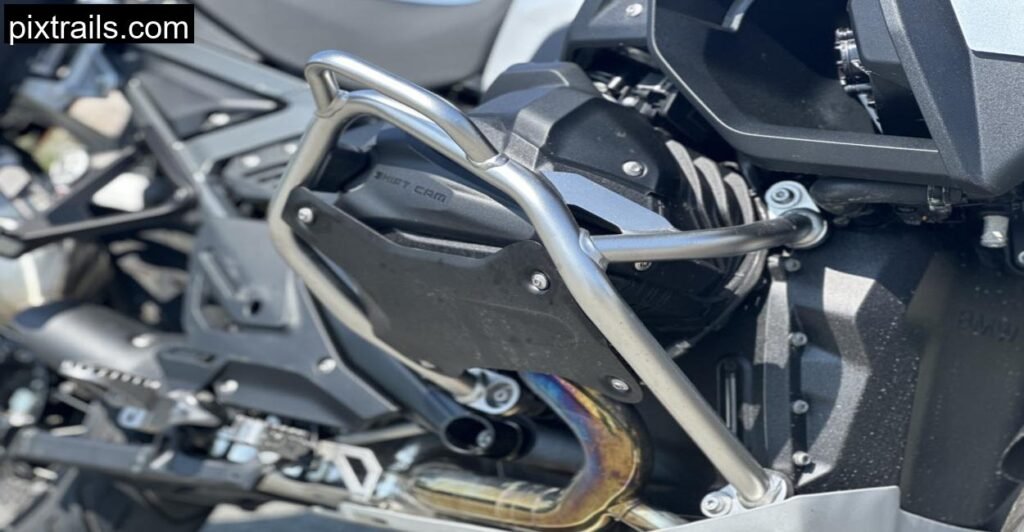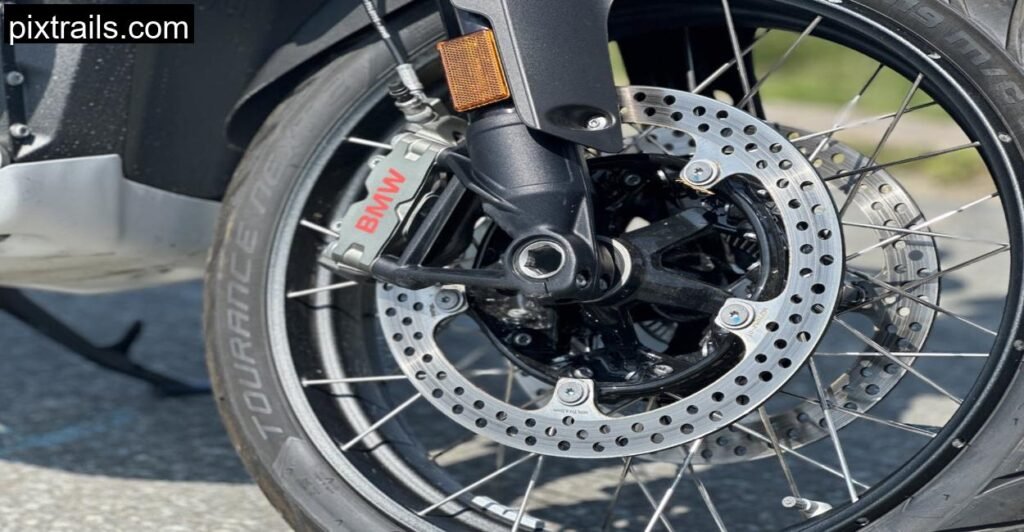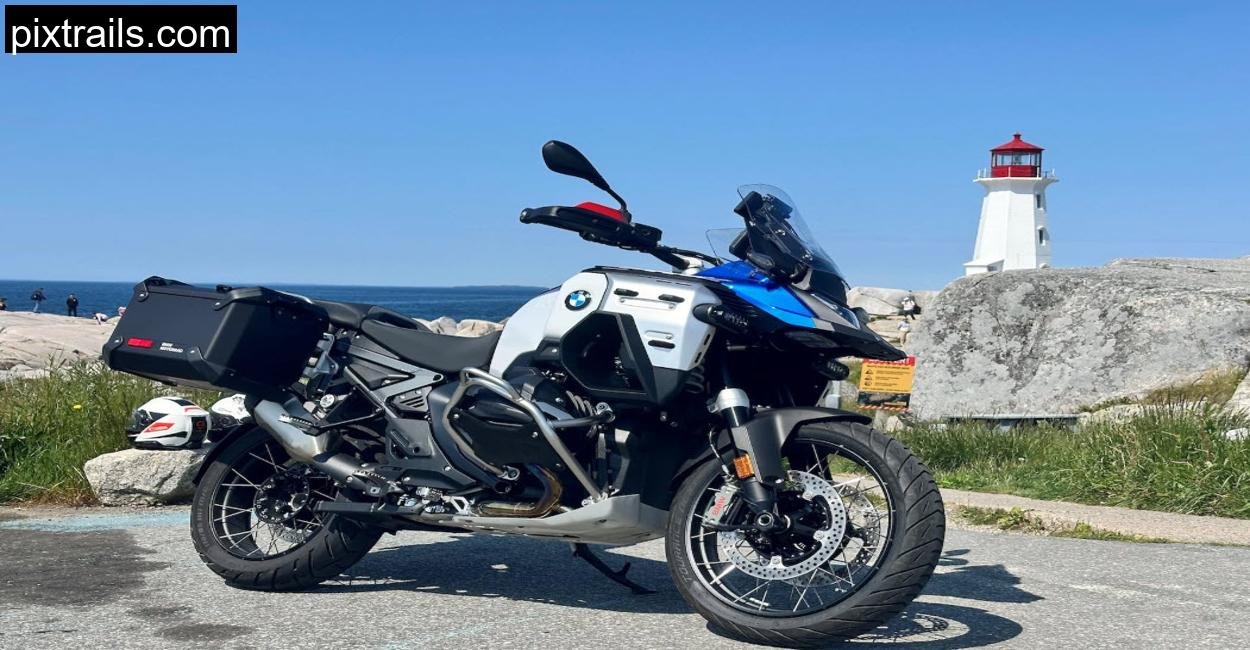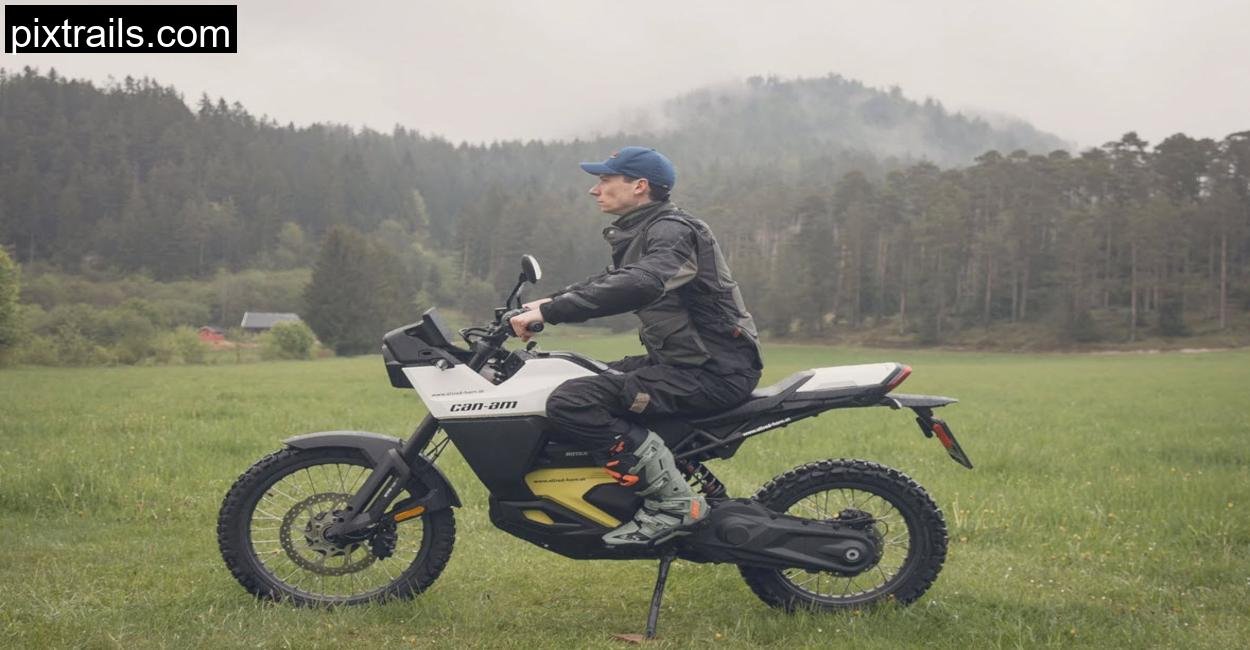It’s funny how the best adventures often start with something you didn’t plan.
When I booked my long-awaited motorcycle tour through Nova Scotia, I had the BMW F 800 GS in mind, light, manageable, nimble enough for the winding coastal roads I’d been dreaming about. But when I arrived in Halifax, there it was: a brand-new BMW R 1300 GS Adventure. Big. Heavy. Intimidating. And, in my mind, maybe a bit excessive for what I needed. I almost swapped it right there on the spot.
I’m glad I didn’t.
Because over the next 1,800 kilometers, from the bustle of Halifax to the raw beauty of the Cabot Trail, this bike didn’t just change my mind, it won me over completely. It wasn’t love at first sight, but it was love from the first twist of the throttle out on Nova Scotia’s sweeping roads.
First Impressions: Halifax Meets Bavarian Muscle
The R 1300 GS Adventure is a commanding presence even when it’s parked. The updated front end design, sleeker, more aerodynamic than the outgoing 1250 GS, had me skeptical at first. I loved the old tubular frame look for its rugged charm. This new one? More spaceship than dirt warrior.
But once I got on, things started making sense. The fairing fit around my knees perfectly with no sharp edges to catch on. The crash bars blended into the bike’s form instead of jutting out like scaffolding. The cockpit was pure BMW: the “Wonderwheel” control dial right where you want it, a crystal-clear TFT screen, and buttons that fall under your fingers naturally. Even fully loaded, two-up with full luggage, it never felt unwieldy at low speeds, and that’s saying something in Halifax’s stop-and-go traffic.
And speaking of low speeds, the adaptive seat height system was worth its weight in gold when creeping up Halifax’s steep, narrow streets. Press a button and the bike squats down, making stops far less of a balancing act.
The Engine: Boxer Brilliance with a Quirk

Let’s talk about the heart of the beast, the 1,300 cc ShiftCam boxer twin.
BMW’s numbers say 145 horsepower and 149 Nm of torque. Numbers are just numbers until you’re on the NS-30 highway, leaning through a long, sweeping curve along the coast, and the bike just…pulls. Effortlessly. At 3,000 rpm you’re already in the meat of the torque, and the surge is steady, smooth, and deceptively quick.
Two-up with luggage, we were adding roughly 190 kg to the bike’s own 269 kg ready-to-ride weight, and yet it never felt like it was working hard. Roll on the throttle to pass a car, and it responds like it’s been waiting for you to ask.
That said, I did notice one quirk. On the older 1250 GS, you could happily roll along in sixth gear at 50 km/h and the bike wouldn’t complain. On the 1300, sixth gear feels just a little bit strained until you’re closer to 70 km/h, unless cruise control is on. Then it’s magically fine. I’m convinced the electronics are smoothing things out when cruise is engaged, but if you’re shifting yourself, you’ll probably drop a gear earlier than you used to.
The only real annoyance was the gearbox in city riding. First and second have a noticeable “clunk” when shifting, especially in stop-start traffic. Not a deal breaker, but a reminder that this is still a big adventure bike, not a scooter.
Chassis & Handling: Built for Balance

If the engine is the heart, the chassis is the soul of this bike. BMW has been refining their Telelever front and Paralever rear suspension systems for decades, and it shows.
Even fully loaded, the GS Adventure feels balanced in a way very few big bikes do. The wide handlebars let you steer with minimal effort, and the turning circle is tighter than you’d expect for a machine of this size.
The ESA (Electronic Suspension Adjustment) works invisibly in the background, stiffening under braking, softening over rough patches, and adjusting for load without you thinking about it. The adaptive ride height was a godsend on gravel roads north of Cheticamp, letting me raise the bike for better clearance and lower it again for tight turns in town.
If I have one gripe, it’s that the suspension, while excellent, doesn’t quite iron out the worst potholes as much as I’d hoped for a €30,000 motorcycle. It’s good, but not magic carpet good.
Comfort & Ergonomics: Nova Scotia-Proof
We rode long days, sometimes over 400 km, and I never once got off the bike feeling cramped.
I’m tall, and the relaxed knee angle is perfect for me. My passenger also found the rear seat surprisingly comfortable, with plenty of room to move around. Heated grips? Check. Adjustable windscreen? Yes, and you can fine-tune it with one hand while riding.
The “I can do anything” feeling people talk about with the GS series? It’s real. Whether we were navigating Lunenburg’s cobblestone streets, cruising through fishing villages, or sweeping along the rugged coastline toward Peggy’s Cove, the bike felt completely in its element.
By the third day, I caught myself thinking less about how big it was and more about how easy it made the ride.
Technology & Equipment: The Touring Toolkit
BMW has clearly thought about the little things. The panniers open smoothly, have built-in limiters so the lids don’t flop over, and even offer USB charging ports. I could fit a full-face helmet and camera gear in one pannier without a struggle. The Hill Hold Control made starting on steep grades effortless, just squeeze the front brake briefly and the bike stays put until you roll on the throttle.
The riding modes are intuitive: Road mode for tarmac, Enduro Pro for gravel. Switching between them is quick and doesn’t interrupt the flow of the ride.
Life with the GS Adventure: The Nova Scotia Reality
Nova Scotia’s roads are a test for any touring bike. Smooth in some stretches, patched and bumpy in others, with plenty of salt-weathered tarmac near the coast. The GS Adventure never felt unsettled. Even in heavy crosswinds on the causeway to Cape Breton Island, it held its line like a freight train.
The big 30-liter fuel tank meant we could ride over 500 km before thinking about a gas stop, handy when exploring the more remote stretches of the province. And even fully loaded, the bike’s poise never wavered.
Technical Specifications – BMW R 1300 GS Adventure (2025)
Specifications have been verified using the BMW’s official website. We prioritize official sources to ensure accurate and trustworthy data.
| Specification | Detail |
| Engine Type | Boxer twin, 4-stroke |
| Displacement | 1,300 cc |
| Power | 145 hp @ 7,750 rpm |
| Torque | 149 Nm @ 6,500 rpm |
| Length | 2,280 mm |
| Width | 1,012 mm |
| Ready-to-ride Weight | 269 kg |
| Fuel Tank Capacity | 30 liters |
| Front Wheel | 19-inch |
| Seat Height (adaptive) | Variable |
Conclusion: From Skeptic to Devotee
When I first saw the R 1300 GS Adventure in Halifax, I thought it was too much bike for the trip I had planned. By the time I watched the sun set over the Gulf of St. Lawrence from the Cabot Trail, I couldn’t imagine riding anything else here.
Yes, it’s expensive. Yes, it’s big. And yes, it takes a little getting used to. But for covering vast distances in comfort, with the ability to tackle whatever the road, or lack of road, throws at you, the R 1300 GS Adventure is unmatched. In Nova Scotia, it didn’t just take me places, it became part of the experience.
Is the BMW R 1300 GS Adventure too heavy for city riding?
Surprisingly, no, thanks to the adaptive seat height, good steering angle, and balanced weight distribution, it’s manageable even in stop-and-go traffic.
What’s the real-world fuel range of BMW R 1300 GS Adventure?
In mixed riding, we regularly saw 500+ km from the 30-liter tank.
Can BMW R 1300 GS Adventure handle off-road trails?
Yes, in Enduro Pro mode it’s stable and predictable on gravel and dirt, though it’s still a large, heavy bike, so choose your trails wisely.











